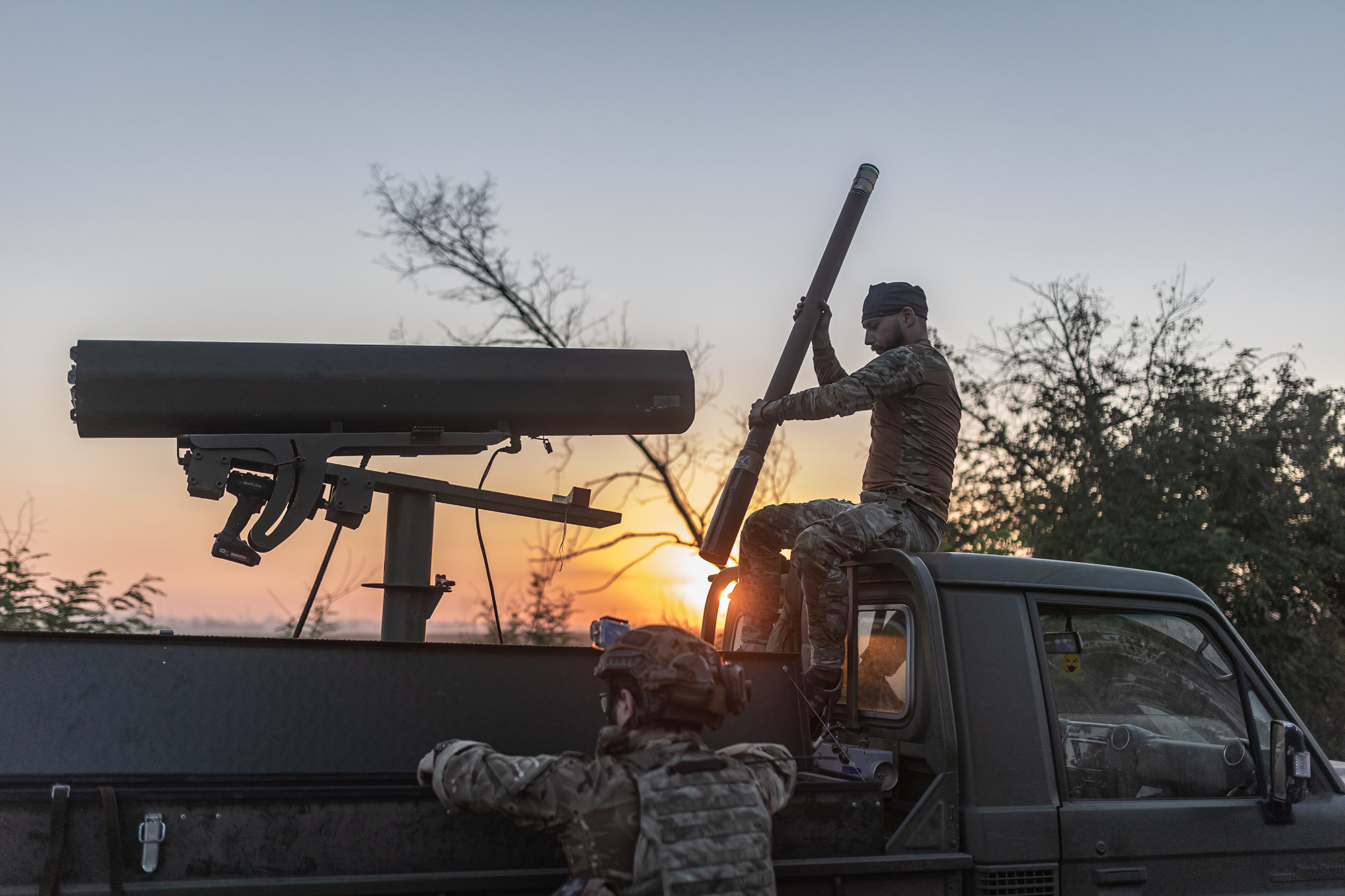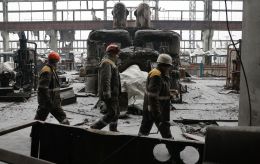Crisis averted? Pokrovsk battle and reality of Russia's slowed offensive
 Illustrative photo (Getty Images)
Illustrative photo (Getty Images)
The Pokrovsk region remains the most intense and challenging front line. More details on what is happening there and whether we can talk about stabilization of the situation in the material by RBC-Ukraine below.
Contents
After a critical month, the Defense Forces managed to avert the most pessimistic scenario for Pokrovsk. Before the war, this city had a population of about 60,000 people. Together with the neighboring city of Myrnohrad, they formed an entire agglomeration that, in relatively peaceful times, housed more than 100,000 residents.
This area is effectively an industrial zone with dense urban development and a network of mines. At the same time, it is an important logistical defense hub for our troops in the Donetsk region, located at the intersection of railway and road networks. This specificity makes the capture of Pokrovsk both a complex and priority task for the Russians in their efforts to occupy the entire Donbas.
Why Russians managed to advance in Pokrovsk direction
For a year and a half, the situation on this section of the front remained unchanged until the enemy intensified near Avdiivka last fall. In February, this city fell under Russian control, and within weeks, Ukrainian defenses on the Avdiivka-Pokrovsk direction began to crack. In two months, the enemy advanced more than twenty kilometers deep, capturing Ocheretyne.
In the summer, the Russian incursion began to expand, and during August, settlements in this direction were lost almost daily. According to DeepState analysts, in August, the Russians captured about 355 square kilometers, most of them in the Pokrovsk and Toretsk directions. This is perhaps the fastest enemy advance since 2022. Recently, enemy units managed to capture the important defensive cities of Novohrodivka and Karlivka in just a few days. Before the war, each of these cities had over 14,000 residents.
The fortifications built by the Ukrainian military — trench networks, anti-tank obstacles, and strongpoints — could not stop the Russian advance. A soldier involved in the fighting in the Pokrovsk direction cited two key factors in an interview that played in the enemy's favor and contributed to their advance. The first is the moral and physical fatigue of the soldiers, particularly the infantry. The second is coordination issues among the troops and, at times, incompetent decisions by senior officers at the operational-tactical level.

The situation in the Pokrovsk direction has been changing for over a week now (photo: GettyImages).
Several soldiers interviewed a week ago claimed that the Russian General Staff allegedly had orders to capture Pokrovsk by October 1. In their opinion, this goal does not seem realistic, but battles for this city could begin by the end of September in a pessimistic scenario or in November in an optimistic one.
However, just a few days later, Commander-in-Chief of the Armed Forces of Ukraine Oleksandr Syrskyi, in an interview with CNN published on September 5, said that in the last six days, there has been no movement of Russians in the Pokrovsk direction. Some Western media were quick to declare stabilization on this section of the front following this statement. Over the past week, the situation in the Pokrovsk direction has indeed changed somewhat.
"In the last month, the intensity of the fighting in the Pokrovsk direction reached 55 engagements per day, and overall on the Eastern front, it increased to 150-200 engagements, whereas previous figures were approximately 100-150. Understanding this situation, our military-political leadership took appropriate actions, introduced additional resources, partially reinforced units in the Pokrovsk direction, and provided additional means, including ammunition. Thanks to this, in recent days, the beginning of stabilization on this front line has become evident," said retired Lieutenant General and former Deputy Chief of the General Staff of the Armed Forces of Ukraine, Ihor Romanenko, in an interview.
On the other hand, the enemy has also adjusted its actions somewhat over the past week. The enemy shifted its main attack from Pokrovsk (the Hrodivka - Sukhyi Yar segment) southwards towards Selydove - Ukrainsk - Hirnyk - Kurakhove. This is essentially the intersection of the Pokrovsk and neighboring Kurakhove directions, the left flank of the enemy group moving towards Pokrovsk.
'Fortress Pokrovsk'
Essentially, the Russians have decided that before moving towards Pokrovsk, they need to widen and secure their flanks (in this case, their left flank). The deeper the enemy penetrates our defensive lines (such as in the Pokrovsk direction), the greater the risk of flanking attacks by Ukrainian forces.
"The enemy can no longer conduct offensives simultaneously in several directions on the Eastern front. They will have to prioritize. To capture Pokrovsk, they must address the situation in Selydove. Initially, they attempted to act from the Toretsk direction, but now they can't operate on all fronts simultaneously. Therefore, in recent days, there have been positive signs of stabilization beginning. Within the next week, it will become clear which trend will prevail on this front: the enemy's offensive or our defensive," Romanenko explained.
The soldiers interviewed noted that over the past week, there has indeed been a noticeable slowdown in Russian movement in the Pokrovsk direction. In their opinion, this could be due to the arrival of additional forces in this area and the challenges the enemy group faces. Does this mean the threat to Pokrovsk has passed? Absolutely not.
In more than a week, the enemy has made no significant advances in the Hrodivka - Krutyi Yar area, where they need to cross the Kazennyi Torets River. Nor near Sukhyi Yar and Novohrodivka, where they wanted to push directly towards Myrnohrad and Pokrovsk. Ultimately, they have not achieved significant success in the direction of Selydove either. Fighting is currently ongoing on the outskirts of this city and in Ukrainsk and Halytsynivka. The Selydove - Ukrainsk segment is a well-fortified area with a network of mines that should somewhat ease the defense for our troops.
At the same time, the situation looks threatening southeast of Selydove, in the Nevelske area. This settlement was fully occupied by the Russians in recent days. In this section, the enemy is attempting either to encircle our forces or at least push them back across the Vovcha River under the threat of encirclement on the Hirnyk - Kurakhivka segment. If they succeed, it will indeed strengthen the left flank of the enemy group advancing on Pokrovsk.
"Why has the enemy slowed its movement towards Pokrovsk? They need to secure the flanks of their group operating in this direction. So now, they are essentially strengthening their flanks, widening them to prevent breakthroughs and encirclement of their forward assault units by the Ukrainian army. They have the resources to carry out this mission, so there should be no illusions here. Resources are the decisive factor influencing the further course of events on the battlefield," believes former Chief of the Press Service of the General Staff of the Armed Forces of Ukraine, Colonel Vladyslav Seleznov.
While the enemy is occupied with their flanks, Ukrainian units are gaining additional time to strengthen defensive lines and fortifications directly in the Pokrovsk area. Moreover, even if the enemy manages to capture Selydove and push our forces across the Vovcha River, they will need even more forces to advance on Pokrovsk-Myrnohrad. And this could pose a challenge for them.
"According to military intelligence assessments, by early October, the enemy will have depleted its resources, including those at the strategic level. After that, they will be forced to take a pause. Therefore, de facto, the Ukrainian army on this front needs to hold out for four weeks, after which they will have an operational "breather" to either strengthen fortifications, reinforce defensive lines and positions, or possibly conduct their counteroffensive actions. I wouldn't risk talking about any catastrophic scenario for the Pokrovsk direction," says Seleznov.
Another soldier interviewed suggested that the slowdown in the enemy's advance or the first signs of stabilization should not be misleading. While they are now advancing at a slower pace compared to earlier, heavy fighting continues along almost the entire Pokrovsk direction. The slowdown may have postponed the start of battles for Pokrovsk but has not forced the enemy to abandon its goal.
"Pokrovsk is now being heavily shelled with artillery, just as it was before the Russian offensive on Avdiivka and Bakhmut. Back then, it was the fortress of Bakhmut, and now we have the fortress of Pokrovsk. And the Russians have not given up on the idea of capturing this city at any cost," a source told RBC-Ukraine.

